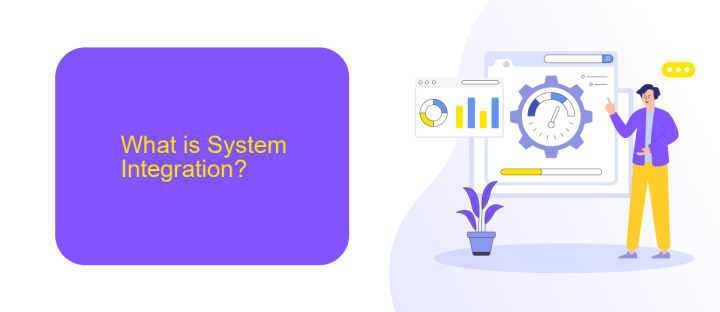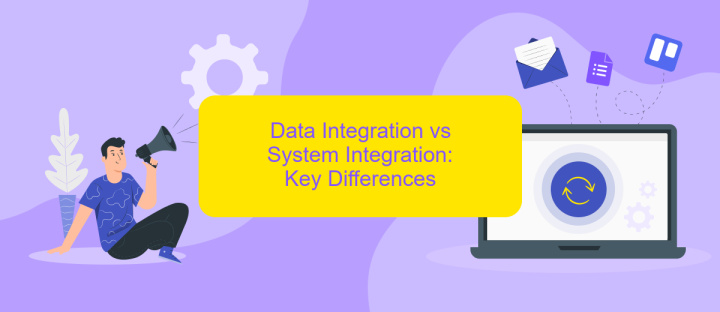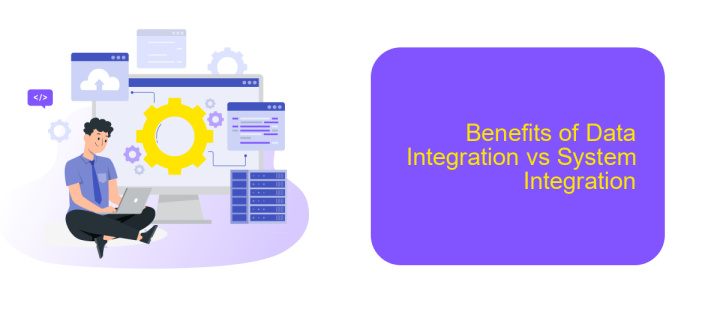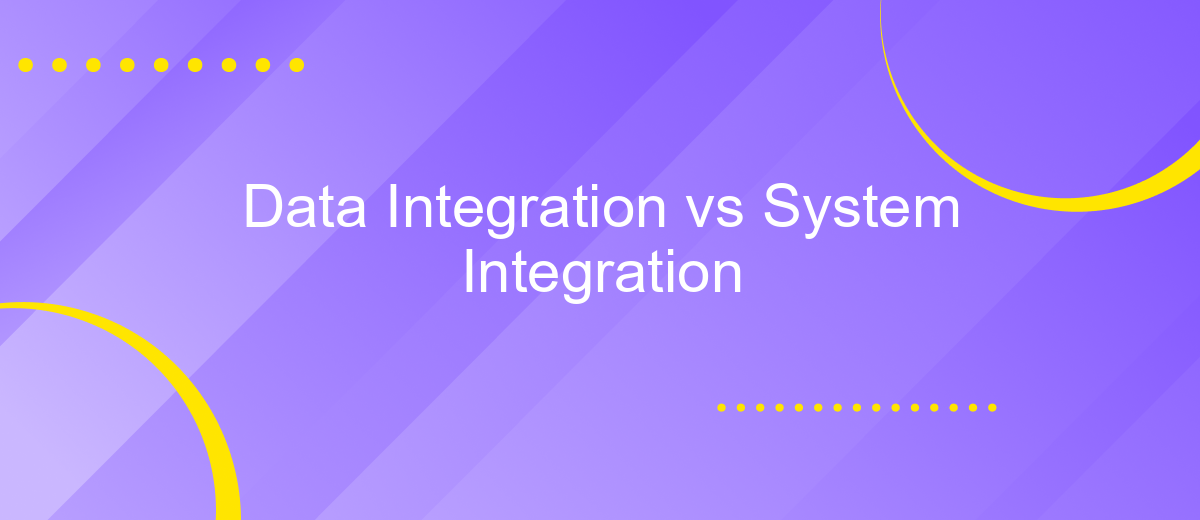Data Integration vs System Integration
In today's interconnected digital landscape, the terms "data integration" and "system integration" are often used interchangeably, yet they refer to distinct processes with unique objectives. Data integration focuses on combining data from different sources into a unified view, while system integration involves linking various IT systems to function as a cohesive whole. Understanding these differences is crucial for optimizing organizational workflows and achieving seamless operations.
What is Data Integration?
Data Integration is the process of combining data from different sources to provide a unified view. This is essential for businesses that need to consolidate information from various databases, data warehouses, and other data repositories to make informed decisions. By integrating data, organizations can improve data quality, enhance collaboration, and gain deeper insights into their operations.
- Centralizes data from multiple sources
- Improves data accuracy and consistency
- Facilitates better decision-making
- Enhances data accessibility and usability
Tools like ApiX-Drive simplify the data integration process by offering automated workflows that connect various applications and services. With ApiX-Drive, businesses can easily set up integrations without the need for extensive coding knowledge, ensuring that data flows seamlessly across different platforms. This not only saves time but also reduces the risk of errors, making data integration more efficient and reliable.
What is System Integration?

System integration is the process of bringing together various subsystems or components into a single, cohesive system that functions as one. This involves linking together different computing systems and software applications physically or functionally, to act as a coordinated whole. The goal is to improve efficiency and functionality by enabling disparate systems to communicate and work together seamlessly. This can include integrating hardware, software, networking, and storage solutions to create a unified IT environment.
One of the key aspects of system integration is ensuring that data flows smoothly between different systems, which can be particularly challenging when dealing with legacy systems and modern applications. Tools like ApiX-Drive can simplify this process by providing a platform for setting up integrations between various services and applications without the need for extensive coding. By automating data exchange and synchronization, ApiX-Drive helps organizations streamline operations and improve overall system performance.
Data Integration vs System Integration: Key Differences

Data integration and system integration are two critical aspects of modern IT infrastructure, but they serve different purposes and involve distinct processes.
- Purpose: Data integration focuses on combining data from different sources into a unified view, while system integration aims to make different IT systems work together seamlessly.
- Scope: Data integration deals with data consistency, quality, and accessibility, whereas system integration involves the interoperability of software, hardware, and network components.
- Tools: Data integration often uses ETL (Extract, Transform, Load) tools, while system integration may require middleware, APIs, and service-oriented architecture (SOA).
- Complexity: Data integration can be complex due to data formats and quality issues. System integration is complex due to the need for compatibility and communication between diverse systems.
For businesses looking to streamline their integration processes, services like ApiX-Drive can be invaluable. ApiX-Drive offers tools that simplify both data and system integration, making it easier to synchronize data and ensure seamless operation across different platforms.
Benefits of Data Integration vs System Integration

Data integration and system integration are two critical aspects of modern IT infrastructure, each offering unique benefits. Data integration focuses on consolidating data from various sources into a unified view, enabling better decision-making and analytics. On the other hand, system integration aims to ensure seamless communication between different software applications and systems, enhancing operational efficiency.
One of the primary benefits of data integration is the ability to create a comprehensive, single source of truth. This unified data view helps organizations gain insights and make informed decisions. System integration, however, streamlines business processes by enabling different systems to work together, reducing redundancy and improving overall productivity.
- Enhanced data accuracy and consistency
- Improved decision-making capabilities
- Streamlined business processes
- Increased operational efficiency
- Reduced data silos and redundancy
Tools like ApiX-Drive can significantly simplify both data and system integration processes. ApiX-Drive allows businesses to automate data transfers and synchronize various systems without extensive coding, making it easier to realize the benefits of both integration types. Whether you need to consolidate data or ensure seamless system communication, leveraging such tools can be a game-changer.


Considerations for Choosing Data Integration vs System Integration
When deciding between data integration and system integration, it's crucial to consider the specific needs and goals of your organization. Data integration focuses on consolidating data from different sources into a unified view, which is particularly beneficial for analytics and reporting. This approach is ideal for organizations that need to centralize data for better decision-making and insights. On the other hand, system integration involves connecting different IT systems and software applications to function as a cohesive unit. This is essential for streamlining operations, improving workflow efficiency, and ensuring seamless data exchange between systems.
Another important factor is the complexity and scale of the integration. Data integration projects can often be simpler and more cost-effective, especially when using tools like ApiX-Drive, which offer user-friendly interfaces and pre-built connectors for various applications. System integration, however, may require more extensive planning and resources, including custom development and ongoing maintenance. Assessing your technical capabilities, budget, and long-term objectives will help you determine the most suitable approach for your organization.
FAQ
What is the main difference between data integration and system integration?
Why is data integration important for businesses?
Can you give an example of system integration?
What are some common challenges in data integration?
How can businesses streamline the process of system integration?
Time is the most valuable resource for business today. Almost half of it is wasted on routine tasks. Your employees are constantly forced to perform monotonous tasks that are difficult to classify as important and specialized. You can leave everything as it is by hiring additional employees, or you can automate most of the business processes using the ApiX-Drive online connector to get rid of unnecessary time and money expenses once and for all. The choice is yours!

